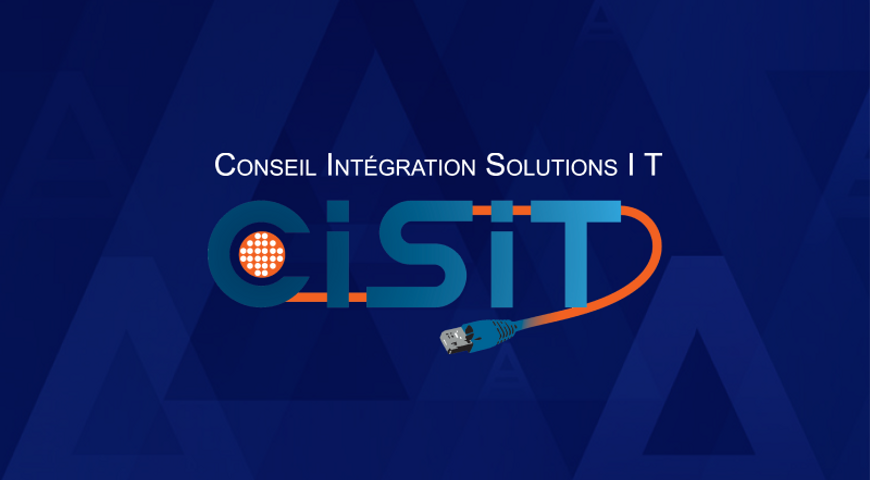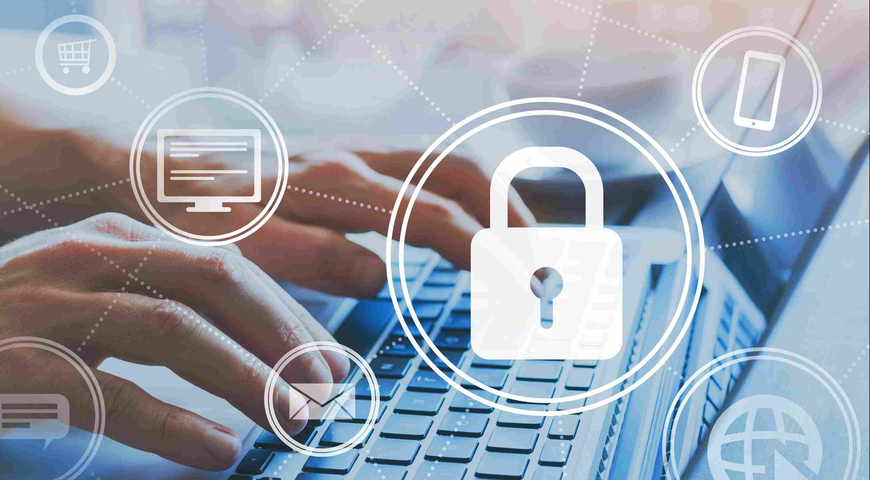
According to Verizon’s 2023 Data Breach Investigations Report, ransomware was the primary method used in 24% of data breaches in 2023. To protect sensitive data, companies must implement proactive measures for ransomware protection.
This blog post explores the importance of robust defense, prevention and ransomware recovery for businesses. It highlights the crucial role of endpoint security and backup solutions in securing data against this malicious threat.
Understanding ransomware attacks
Understanding the nature of ransomware attacks is essential for developing effective prevention and recovery strategies. While ransomware attacks typically encrypt data and demand a ransom for its release, cybercriminals can also target a victim's clients or suppliers by issuing data leak threats, launching distributed denial-of-service (DDoS) attacks or making intimidating phone calls.
These attacks can have devastating consequences, including financial loss, reputational damage and operational disruptions. For example, the personal information of more than 5.8 million individuals was compromised in a data breach at the national pharmacy network PharMerica in the U.S.
Ransomware attacks often enter an organization's network through various infection vectors, such as malicious email attachments, downloads or compromised websites. Attack techniques include social engineering and automated device control via exploit kits, to infiltrate systems and encrypt sensitive data. By staying informed about these attack vectors and methods, businesses can better prepare themselves against ransomware threats.
Endpoint protection software
Endpoint security plays a pivotal role in business ransomware prevention. Endpoint protection software acts as the first line of ransomware defense, safeguarding devices (endpoints) in your business from harmful activities. Moreover, it prevents attacks from gaining a foothold within your network by detecting and blocking threats immediately.
Aside from ransomware prevention, endpoint protection solutions offer several benefits, including:
· Enhanced security: Multilayered defense ensures a robust and comprehensive security strategy against various threats.
· Endpoint visibility: Provides valuable insights into the health and security status of individual devices to identify vulnerable endpoints and take necessary actions promptly.
· Incident response: Facilitates quick incident response and recovery, minimizing downtime and data loss in the event of an attack.
· Centralized management: Simplifies security management across all endpoints, saving time and effort for IT administrators.
· User education: Provides employees with cybersecurity awareness, reducing the likelihood of falling for phishing and social engineering attempts.
The benefits of robust endpoint protection extend beyond ransomware prevention, contributing to an overall stronger security posture for organizations. It also Increases peace of mind — knowing that your organization is protected against ransomware attacks can help you to focus on your business objectives rather than worrying about the possibility of a ransomware attack.
Key features and best practices
To ensure optimal protection against ransomware and other cyberthreats, it is vital to consider key endpoint protection features and implement best practices.
Key features
Endpoints, such as desktops, laptops and mobile devices are often the entry points for cyberattacks, including ransomware. Endpoint protection software should include features such as:
• Antivirus and anti-malware protection: Detects and remove viruses, malware and other dangerous threats.
• Signature-based detection: Compares files or processes to a known database of malicious files or signatures.
• Sandboxing: Runs suspicious files or processes in a controlled environment to see if they exhibit malicious behavior.
• Application control: Allows you to control which applications can run on your endpoints.
• URL filtering: Blocks access to malicious websites, reducing the risk of web-based ransomware attacks.
• Patch management: Ensures that your endpoints are up to date with the latest security patches.
• Vulnerability scanning: Identifies security vulnerabilities on your endpoints to help patch them before attackers exploit them.
• Data loss prevention (DLP): Helps to prevent the unauthorized disclosure of sensitive data.
Best practices
Following the below best practices can help you keep your data safe, prevent cyberthreats and comply with industry regulations. Plus, it helps build trust with customers and stakeholders.
Here are some examples of best practices:
Use a multilayered approach
Implement multiple layers of security controls to protect endpoints. This can include the configuration of firewalls, antivirus software, intrusion detection and prevention systems, and web filtering. The idea is to have multiple barriers in place to prevent and detect threats.
Keep systems up to date
Regularly update operating systems, applications and firmware on endpoints to ensure they have the latest security patches. Attackers can exploit vulnerabilities in outdated software, so staying current with updates is important.
Use strong authentication
Enforce strong password policies and consider implementing multifactor authentication (MFA) for all endpoint users. MFA adds an extra layer of security by requiring users to provide additional verification, such as a fingerprint or a one-time password.
Implement robust endpoint protection
Deploy reputable antivirus and anti-malware software on all endpoints and keep it updated. Use real-time scanning and proactive detection capabilities to identify and block malicious software.
Monitor and analyze endpoint activity
Implement endpoint detection and response (EDR) solutions that provide real-time monitoring and analysis of endpoint activity. These solutions can help identify and respond to suspicious behavior or indicators of compromise.
Detection and prevention strategies
In addition to robust endpoint protection, adopting proactive ransomware detection and prevention strategies is vital for combating cyberattacks. Your own strategy should include deploying the below technologies and capabilities.
Behavioral analysis
Behavioral analysis closely monitors network traffic, file activities and system behavior for any abnormal or malicious patterns that may indicate a ransomware attack. By establishing a baseline of normal behavior for endpoints and constantly monitoring for deviations, businesses can quickly detect potential threats and take swift action to minimize potential damage.
Machine learning algorithms
These types of algorithms are trained on vast datasets, enabling them to recognize patterns and characteristics of ransomware attacks. By analyzing incoming data, machine learning algorithms can identify known ransomware signatures or new strains based on their behavior. This adaptive approach allows organizations to stay ahead of evolving ransomware threats.
Real-time monitoring
By monitoring network traffic, system logs and endpoint activities in real time, organizations can identify indicators of compromise (IoCs) associated with ransomware attacks. Unusual network connections, unauthorized access attempts or abnormal file behavior can be early warning signs of a ransomware infection. Prompt detection enables immediate response and containment measures to prevent further damage.
Backup and disaster recovery solutions
As the saying goes: "An ounce of prevention is better than a pound of cure." This sentiment rings true in ransomware protection, where backup and disaster recovery solutions are critical in mitigating risks and ensuring business continuity.
The role of backup in ransomware protection
In a ransomware attack, businesses need robust backup solutions to quickly recover their data and resume normal operations. Regular backups are essential for ransomware protection as they enable organizations to restore their systems to a preattack state without giving in to ransom demands.
Off-site backups
Implementing off-site backups is also important to consider. Storing backup copies in a remote location separate from your primary network infrastructure adds an extra layer of security. In the event of a ransomware attack, in which the attackers may attempt to target and encrypt all accessible data, off-site backups provide an independent and isolated repository that remains unaffected by the attack. This approach ensures data redundancy and helps protect against physical damage, theft or any compromise of your primary network storage.
Data encryption
Encrypting backup data adds another significant layer of security to your ransomware protection strategy. Encrypting your backup files makes it exceedingly difficult for attackers to gain unauthorized access to the data — it transforms the data into an unreadable format. It can only be decrypted using the appropriate encryption key. This ensures that even if the backup files are somehow compromised, they remain inaccessible and unusable to attackers.
By prioritizing these practices, you enhance your organization's ability to recover from ransomware incidents swiftly and effectively, maintaining business continuity and safeguarding your valuable data assets.
Disaster recovery planning
Comprehensive disaster recovery planning is integral to responding to ransomware attacks effectively. A disaster recovery plan is a written document that outlines the policies and procedures that should be followed to recover an organization's IT systems and data, and get operations back up and running when a disaster happens.
Key elements of a disaster recovery plan include defining recovery time objectives (RTOs), recovery point objectives (RPOs) and roles and responsibilities.
Recovery time objective (RTO)
This refers to the maximum acceptable downtime or how quickly you need your systems and services to be up and running after a disruption. It represents the timeframe within which you aim to restore operations to a normal state. For example, if your RTO is two hours, you expect to have your systems fully operational within two hours of a disruptive event like a ransomware attack.
Recovery point objective (RPO)
RPO describes the maximum acceptable amount of data loss or how much data you can afford to lose in the event of a disruption. It represents the point in time to which you aim to recover your data after a disruption. For example, if your RPO is one hour, you can tolerate losing up to one hour's worth of data. This means your backup and recovery process should ensure that you can recover your data up to the most recent point in time within that one-hour window.
By setting clear objectives, you can prioritize your data recovery efforts and minimize the impact of ransomware incidents. Check out this case study to see how one company significantly improved its RTOs and RPOs.
Implementing robust backup solutions
You must consider several factors to ensure reliable and efficient data recovery when selecting and implementing reliable backup solutions. Features such as versioning, incremental backups and cloud storage are critical in the context of ransomware protection.
Versioning
Backup solutions that support versioning allow you to access previous versions of files. Versioning is particularly significant in the context of ransomware attacks because it enables you to restore files to a state before encryption. Access to previous versions ensures you can recover clean, unencrypted data — mitigating the attack's impact.
Incremental backups
Ransomware protection involves regular backups to capture changes made to data over time. Incremental backups, as opposed to full backups, only store the changes made since the last backup, significantly reducing backup time and storage requirements. By capturing only recent modifications, organizations can optimize their backup processes and minimize the impact on network performance and storage capacity.
Cloud storage
Leveraging cloud storage for backups offers several advantages in ransomware protection. Cloud storage provides scalability, allowing organizations to adjust their storage capacity as needed without investing in additional hardware. Cloud providers often implement robust redundancy mechanisms, ensuring backups are replicated across multiple data centers. This redundancy adds an extra layer of resilience, safeguarding backups against data loss caused by hardware failures or physical disasters.
Comprehensive ransomware protection strategy
To achieve comprehensive ransomware protection, organizations should integrate endpoint protection software and backup solutions into a holistic strategy. Endpoint protection software acts as a proactive defense, preventing ransomware attacks from compromising endpoints and spreading across the network. Meanwhile, backup and disaster recovery solutions offer a secure safety net, ensuring data availability and continuity even in the face of a successful attack.
The integration of these two components addresses different stages of the ransomware attack lifecycle. Endpoint protection software focuses on prevention and early detection, actively blocking ransomware attacks at their entry points. Meanwhile, backup solutions come into play in the event of a successful attack, enabling organizations to recover their data and systems effectively.
This integration also allows for improved incident response and recovery efforts. When a ransomware attack occurs, organizations can rely on the data backed up before the incident to restore their systems and resume normal operations quickly.
Conclusion
In the face of increasing ransomware threats, businesses must prioritize comprehensive cyber protection. By leveraging endpoint protection software and backup/disaster recovery solutions, organizations can mitigate the risks associated with ransomware attacks.
Remember, prevention is key. Implementing proactive measures and staying informed about the evolving threat landscape are core steps in safeguarding your business. By combining endpoint security measures with reliable backup solutions, you can establish a resilient defense against ransomware and ensure the smooth continuity of your operations. When it comes to ransomware, prevention and preparation are your best allies.
Acronis Cyber Protect
Acronis Cyber Protect offers comprehensive cyber protection for businesses, including backup and recovery, endpoint security, anti-malware and management features, all accessible from a single console. Enhance your endpoint protection with an integrated solution that includes URL filtering, vulnerability assessments, patch management and other automated features.
When you run Acronis Cyber Protect in the Acronis Cloud, you can provide excellent cyber protection to all endpoints regardless of location. This makes it perfect for today’s work environments that involve remote and mobile work. Try it free for 30 days!
About Acronis
A Swiss company founded in Singapore in 2003, Acronis has 15 offices worldwide and employees in 50+ countries. Acronis Cyber Protect Cloud is available in 26 languages in 150 countries and is used by over 21,000 service providers to protect over 750,000 businesses.



